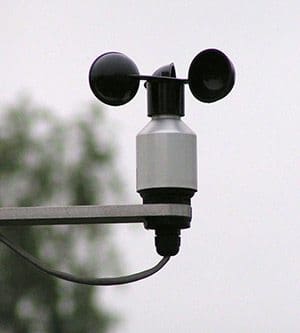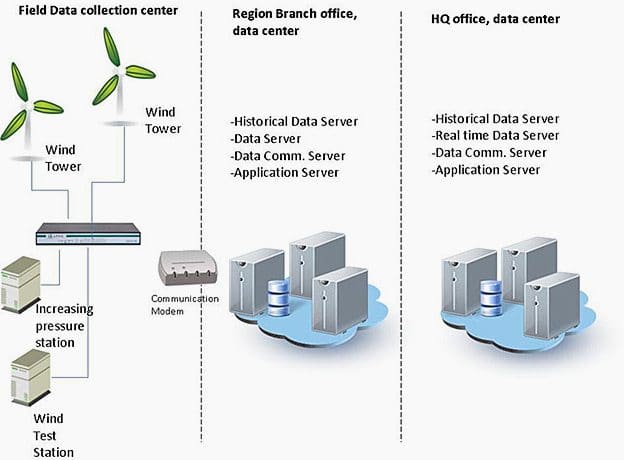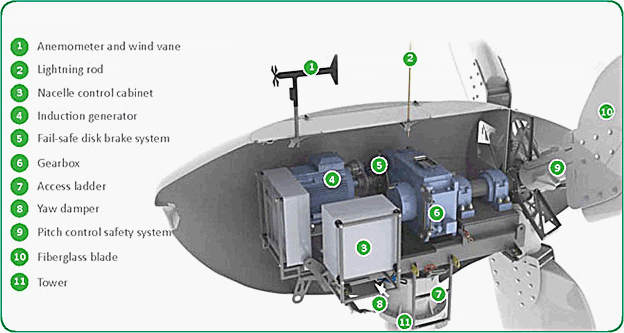Wind Speed – Mistery Or Not?
When considering wind power, most people ask what the average annual wind speed is and how to get that number. The usual response is that you must monitor the wind speed at your sitefor at least 12 months, preferably longer, to determine whether a wind generator will work for you.
Sounds too long? Well, yes and no…
For
a home system, this isn’t necessary. The costs involved in collecting
wind data may not be justified when compared to the total cost of a
small wind machine.
There is no economic formula to determine this, but it doesn’t make much sense to spend $1,200 on instrumentation if your wind machine costs only $3,000. You can get close to the actual number by making an educated guess using the empirical methods.
Options For Monitoring The Wind Speed
If you decide to monitor wind speeds, you have several options.
1 The first is to buy a weather anemometer
and record observations on a regular basis. This is the least expensive
way to collect wind data, but it has disadvantages. For the data to be
valid, you must be methodical in collecting it.
 |
| Weather anemometer |
Recording one instantaneous wind speed per day won’t do.
If you can’t record multiple wind speeds throughout a day, the quality of your data is questionable.
2 A second option is to automate data collection by installing a data collection board in a personal computer. This method works, but the computer must stay on all the time, and there are additional costs.
Since these are not plug-and-play components, some computer hardware and software knowledge is necessary.
 |
| The wind power monitoring system architecture |
3 A third option is to invest in an anemometer system specifically designed for collecting wind data. The least expensive systems simply average the wind speed over time and cost $200 to $300. These systems usually are sold without towers.
While the average wind speed is a useful measurement, it also is important to know the wind speed distribution.
More sophisticated systems usually consist of:
- A portable tower,
- Instrumentation and
- Data logger.
These systems are reliable and accurate, but they are expensive.
After
collecting data, you have equipment that may or may not be useful to
you. The secondary market for used towers and data loggers is limited.
If you buy a used system, consider new instrumentation. This will help ensure quality data.
Usually the system has an anemometer and a wind vane. The anemometer measures wind velocity, while the wind vane registers direction. Both instruments should be mounted on a wind pole or tower that is as close as possible to the height at which your wind machine will be mounted.
If your anemometer is mounted too low, it will underestimate the actual wind resource available.
 |
| Endurance E-3120 50kW Wind Turbine Specification |
It
is generally recommended that the hub height for small machines between
60 feet and 120 feet. Your anemometer also should be within this range.
To generate data for all seasons,
average wind speeds along with distribution and peak gust information
should be recorded for a minimum of three months, but ideally for a full
year. Wind speed data can then be used with performance data for
various wind machines to determine the expected output for each machine
at your site.
If you collect data for a short time,
it can be correlated with existing data to produce a model of the wind
speeds at the potential site. To do this, you need to develop a “correction factor”.
For example,
assume you have collected average wind speeds of 12.8 mph, 10.8 mph and
10.4 mph for the last three months, and the published data from a
nearby site for the same three months is 10.9, 10.2 and 9.5.
Dividing your data by the published data will give you the following deviation factors: 1.174, 1.059 and 1.095. Averaging these results in a correction factor of 1.109.
You can multiply the remaining published data by this correction factor
to estimate wind speeds at your site. This method involves a fair
amount of interpretation, and some sites do not correlate well.
If you are considering a large project, on-site data is a necessity.
These
systems require taller towers – 40 or 50 meters. They include multiple
levels of instrumentation and data loggers that can be accessed
remotely. Assessing a site’s potential for utilityscale wind development
is an expensive undertaking that requires committing significant
financial resources.
No comments:
Post a Comment